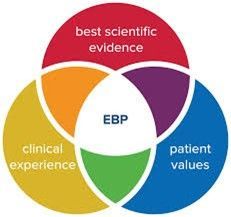Evidence-Based Interventions vs. Community-Defined Practices
Balancing the use of community defined practices and evidence based interventions requires input from local agencies with the macro view of statewide stakeholders.

In California, the Children and Youth Behavioral Health Initiative (CYBHI) was created to develop improved systems to help children and their families improved behavioral health services. It has several initiatives it is developing. One of these is its Round 5 plan to scale up evidence-based interventions (EBIs) and community-defined practices (CDPs). The CYBHI is available for the public to participate in and listen to as interested parties. One of the challenges is to determine which practices should be used. Both EBIs and CDPs have their pros and cons.
EBIs can be defined as “practices or programs that have peer-reviewed, documented empirical evidence of effectiveness. Evidence-based interventions use a continuum of integrated policies, strategies, activities, and services whose effectiveness has been proven or informed by research and evaluation.” The key element for EBIs is that they have research studies, many of which use an experimental vs. control group to determine the effectiveness of the practice. Then the study is published and reviewed by other professionals or researchers to verify the information, while other institutions may replicate the study to determine its effectiveness. While EBIs have a sound research basis, they may not represent the desired population. In an article, BMC Medicine indicated six potential biases in evidenced-based medicine. Applied to behavioral health, the concern may be the subjects chosen may not reflect the desired population for the practice or the necessary interventions that may apply to them. The other factor of EBIs is to keep their use strictly confined to the practice’s parameters. As with medications that have a specific purpose, EBIs must adhere to their target population, fidelity, and be sustainable.
With CDPs, the approach is somewhat different. Rather than starting with the research and defining the population, CDPs or community-defined evidence begins with the population and discovering what works for them. One of the major reasons for using CDPs is that many EBIs are not researched with people of color. CDP practices are “developed specifically to address the unmet needs and strengths of a cultural group; they are rooted in the community’s worldview and its historical and social contexts.” While the practice does not necessarily have wide-ranging utility among multiple communities, it has specific benefits for its limited communities.
How does the CYBHI best balance the use of EBIs and CBPs when California is a culturally and geographically diverse state? Not only are many ethnicities present in the state (many of whom are underserved and need better access to care), but disparity also exists between rural vs. urban counties. One approach is to allow each county to determine the best mix of EBIs and CBPs. The disadvantage of a larger organization making these decisions is that they are doing so from a macro level of the state and may not understand the differences between Alameda vs. San Diego Counties, between Yolo and Modoc. When decisions are made at the local level, with guidance from the state, the balance of decision-making provides the best match of services.




